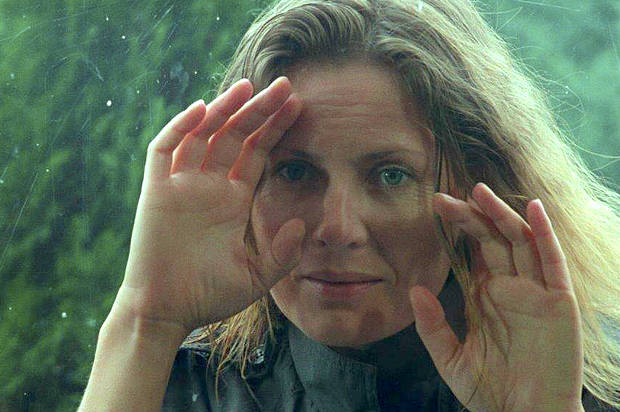
Cinema, an art of image and sound, can provide reflexive, philosophical experiences in a specific way, that no other art can manage in the same manner. There is a line of filmmakers that have understood and treated cinema as an adult art capable of exploring in depth the most serious questions about life and death. Here are ten of the greatest films of this kind of cinema.
1. Ikiru (Akira Kurosawa, 1952)
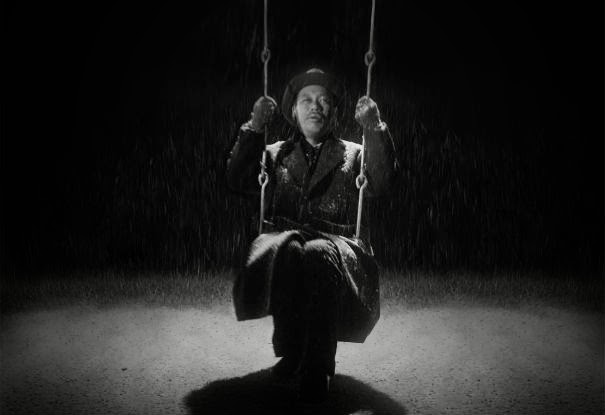
Akira Kurosawa is justly famous for his samurai films, among which there are some absolute masterpieces such as “Seven Samurai” and “Ran”. But outside the warrior genre he also made some superb films, of which “Ikiru” is perhaps the best one.
It tells the story of a man that after leading a shallow existence and having worked for the Government as a civil servant for many years in a perfunctory way, without caring for the effects of his actions and omissions, has to face a hard situation: he is diagnosed cancer and told he’s got only a year to live, at most. At the beginning, he doesn’t know how to react to the notice. He just gets drunk, gambles and goes to the red light district. He has never thought of the big questions of life, let alone of death, and now, all of a sudden, has to come to terms with the incredible news.
In a subtle movement, Kanji Watanabe (magnificently played by Takashi Shimura) becomes aware of what a nonsensical waste his life has been, without really taking care of anything nor anyone, just having a family because it’s the normal thing to do and having a secure job as a clerk because one doesn’t want to take chances.
And he feels the urge to give some sense to his life before dying. In his work he can make decisions that benefit the people, and for the first and last time he decides to do something substantial for the others. His last months of life will be devoted to help poor people in a very concrete manner.
The closing shot, one of the most discretely transcendent of all the story of cinema, conveys the real import of one man’s decision to do the right thing and fulfil his main duty, not as a clerk, but as a human being.
It is very important to stress that both the screenplay and Shimura’s interpretation are very nuanced, which makes a profound effect on the viewer.
2. Sansho the Bailiff (Kenji Mizogouchi, 1954)
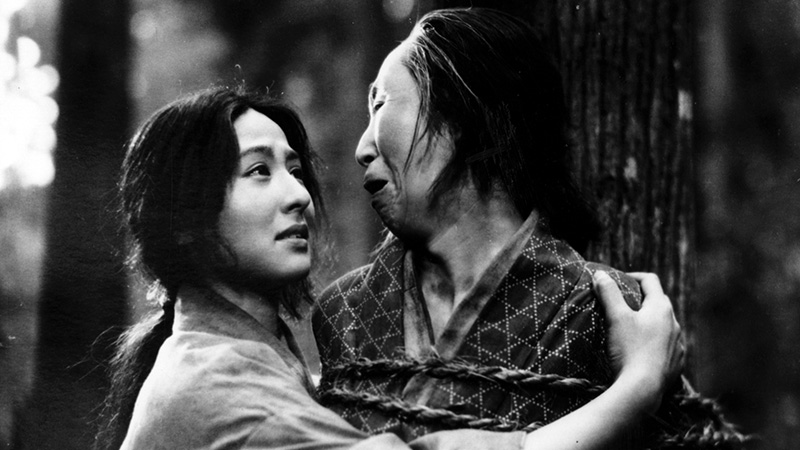
“Sansho the Bailiff”, the greatest masterpiece by Japanese director Kenji Mizogouchi, strangely has as a title the name not of the hero but of the villain we hate and despise. The film is set in the 11th century, in a feudal society marked by violence and death.
A honest district administrator has had to flee after antagonizing Sansho, the runner of a camp of forced labor. His wife is made prisoner and sent to an island, where she is sold into prostitution. His son (Zushio) and his daughter (Anju) are made slaves to Sansho. After ten years, Zushio has become as cruel and brutal as Sansho, for whom he works as a foreman.
The cruelty inflicted by Sansho and Zushio to the human beings turned into slaves is unspeakable and unbearable. Probably, it reflects the brutality of the prison camps in Japan during World War II, that Mizogouchi knew.
The film consists mainly of the process of Zushio coming back to the honesty his father hasd instilled in him as a child, and of tearing off the hatred and bitterness that have gone so deep into his heart. It is a film about how to give up sheer brutality and become human, as long as we give a positive meaning to this concept.
There are many painful moments in the film, there are deaths and tortures. It is a film harder to see than any explicitly violent current film, because it deals with evil in an adult way. At the same time, the pure poetry of its images, the long takes, the elegant movement of camera so characteristic of the director, the natural interpretation of the actors, the fusion of nature and humanity, the lyricism of so many of its moments, make the wound still deeper.
And yes, it is a redeeming film, not only for Zushio, but for any conscious viewer, and for humanity if it could see it as a whole.
3. The Thin Red Line (Terrence Malick, 1998)
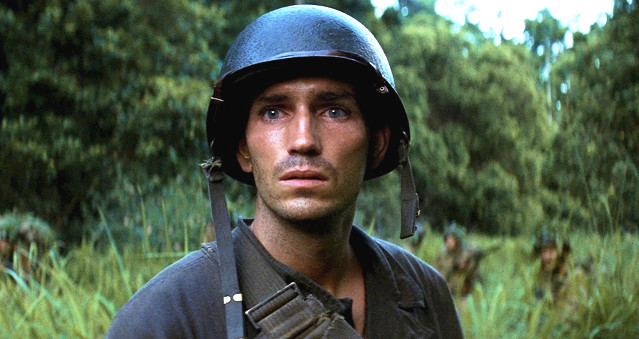
If asked about the best war movies, many cinema lovers will answer in the first two places “Paths of Glory” by Kubrick and “Apocalypse Now” by Coppola. Two great films, of course. Shall we add to them “The Thin Red Line”, an experimental film by Terrence Malick where the main point is not action but philosophical reflection, the question about violence human beings inflict to each other?
Set in World War II, in the Pacific Guadalcanal Campaign, the film shows how a company of American soldiers try to take a hill of the island from the Japanese forces. There are many deaths and serious injuries, many soldiers crawling through the tropical rainforest among tall grass blades trying not to be seen by the Japanese soldiers that are shooting to them with machine guns from the hilltop.
Combined with a gorgeous cinematography, we listen to the soldiers’ voices over asking themselves what the hell they are doing there, what is all this mess about. The lyric images of the island, even of the American soldiers (a poetry abruptly interrupted from time to time by the death of a man) are finely coupled with the quiet, musing voices and their monologues of philosophical import. But one has the feeling that the reflections belong more to the director (who also wrote the screenplay) than to the soldiers, because they are from a mature, learned person, not from young, inexpert privates.
Despite this insufficient development of some individual characters, a great philosophical feature about the root of violence.
4. My Night at Maud’s (Eric Rohmer, 1969)

French New Wave director Eric Rohmer is famous for having made films where characters talk to great extents trying to understand the others and themselves. Often, these conversations are almost like Platonic dialogues, where few characters try to make their point and to reach an agreement about the questions they feel more important. Often, the question is love.
The most accomplished film by Rohmer is “My Night at Maud’s”, that belongs to a series of six films entitled Moral Tales by Rohmer, but is an independent work that can be seen on its own. Placed in Clermont-Ferrand, in the center of France, it shows the dilemmas of a catholic man of 34 years (Jean-Louis Trintignant) who feels attracted at the same time by two women.
One is a stranger he sees at church while both are attending mass, and with whom he shares the need to experience the transcendence in earthly life (Rohmer himself was a catholic). The other is Maud, a divorcee he meets through a friend who is a philosophy teacher and her lover. The three of them have dinner at Maud’s, and since it is winter and it is snowing heavily, the man, who lives out of the city, stays the night at Maud’s while the philosopher, who is drunk and lives close by, leaves.
The central fragment of the film, as the title announces, is this night at Maud’s, where both characters speak their minds about what they expect from a love relationship. The fine nuances of their viewpoints, the mature look at their former relationships, make this a dialogue worth following.
The actor and actress are superb, with an interplay of looks and silences that says as much as the words. And the cinematic work that captures all the details of the body language and the way the two bodies occupy the space of one only room (the living room at Maud’s) is splendid.
5. My Dinner with André (Louis Malle, 1981)
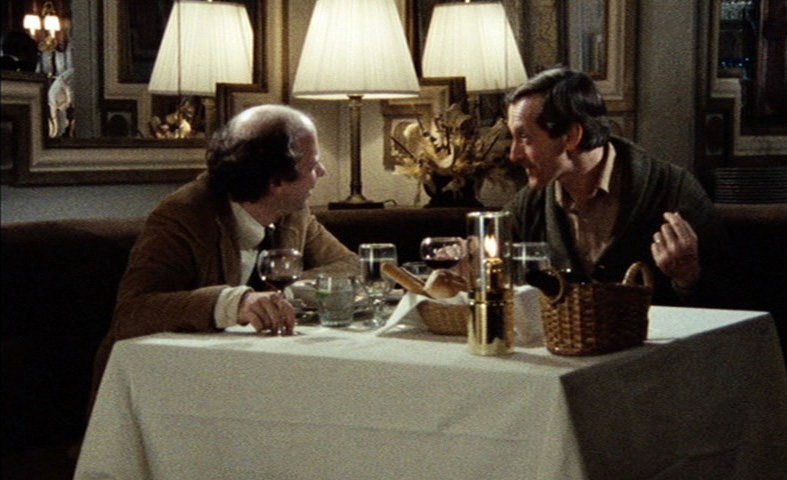
“My dinner with André”, by another French director, Louis Malle (this having made an American career), is a tour de force comprising only two characters, two friends that meet to have dinner at a restaurant after not having seen each other for many years. One is a playwright (Wally, played by Wallace Shawn) that can’t have his plays produced, and has to make both ends meet doing odd jobs.
The other is a theatre director (André, played by André Gregory) that left everything and had some mystical experiences in different parts of the world (Poland, England, the Orient) while looking for the sense of life.
These experiences have affected him deeply, have showed him a secret dimension of existence, have enlightened him in a spiritual sense. Now, these experiences have ceased to happen, and the director is left haunted by the memory of them.
And we have more than 100 minutes of looking at and listening to both of them while they have dinner at a restaurant, without even getting up from the table to go to the toilet. The first part of the conversation (about 60 minutes) consists basically of André describing his mystical experiences, while Wally listens and eats. All very New Age and intriguing.
Then, increasingly, there is an interchange between them, where they talk about the main aspects of their lives: experimental theatre, relationship with their wives, the frustrating vacuum of social intercourse, what one should expect from life.
Wally emerges as a lover of the little things of life, of staying with her wife and finding his coffee at the table in the morning. André looks for something deeper, or more transcendent, the spiritual level. Both of them understand each other, are sympathetic to what the other cherishes, while holding their ground. “My Dinner with André” is a film about listening, about communication, about friendship.